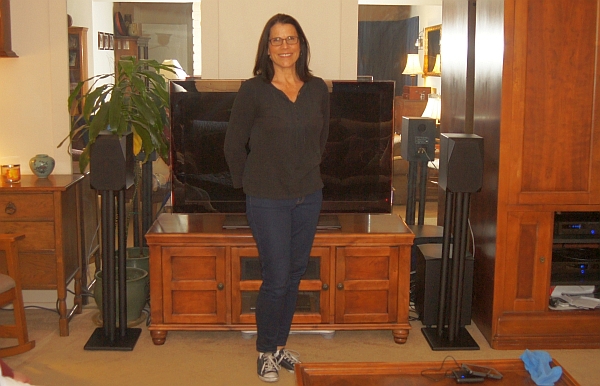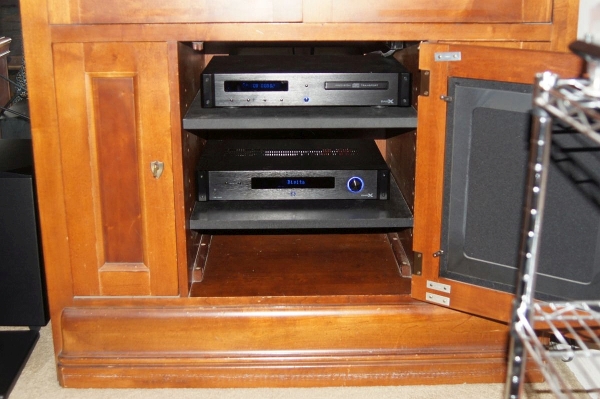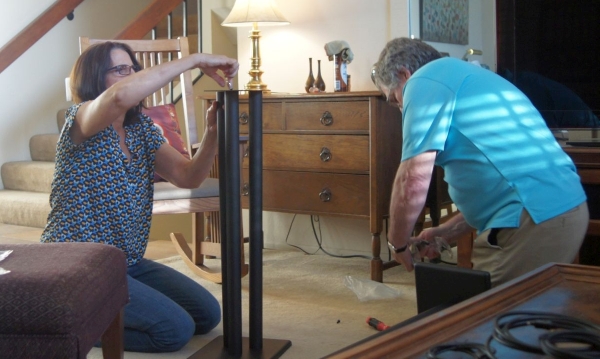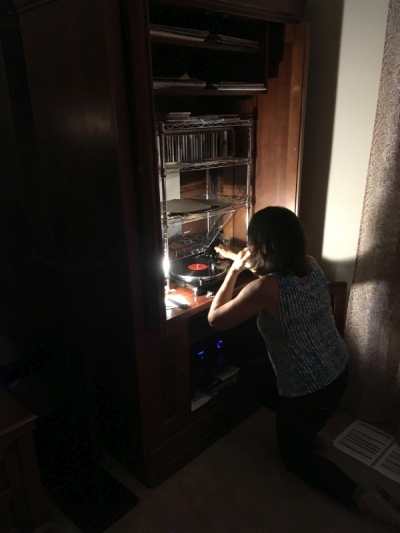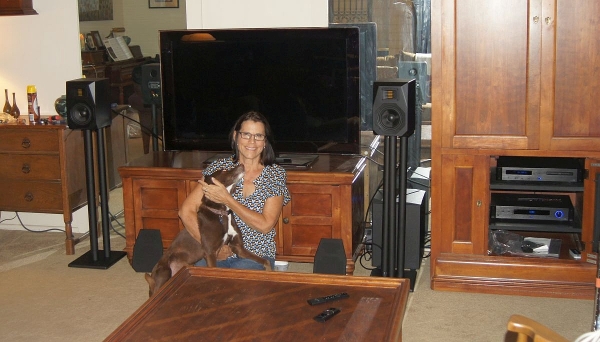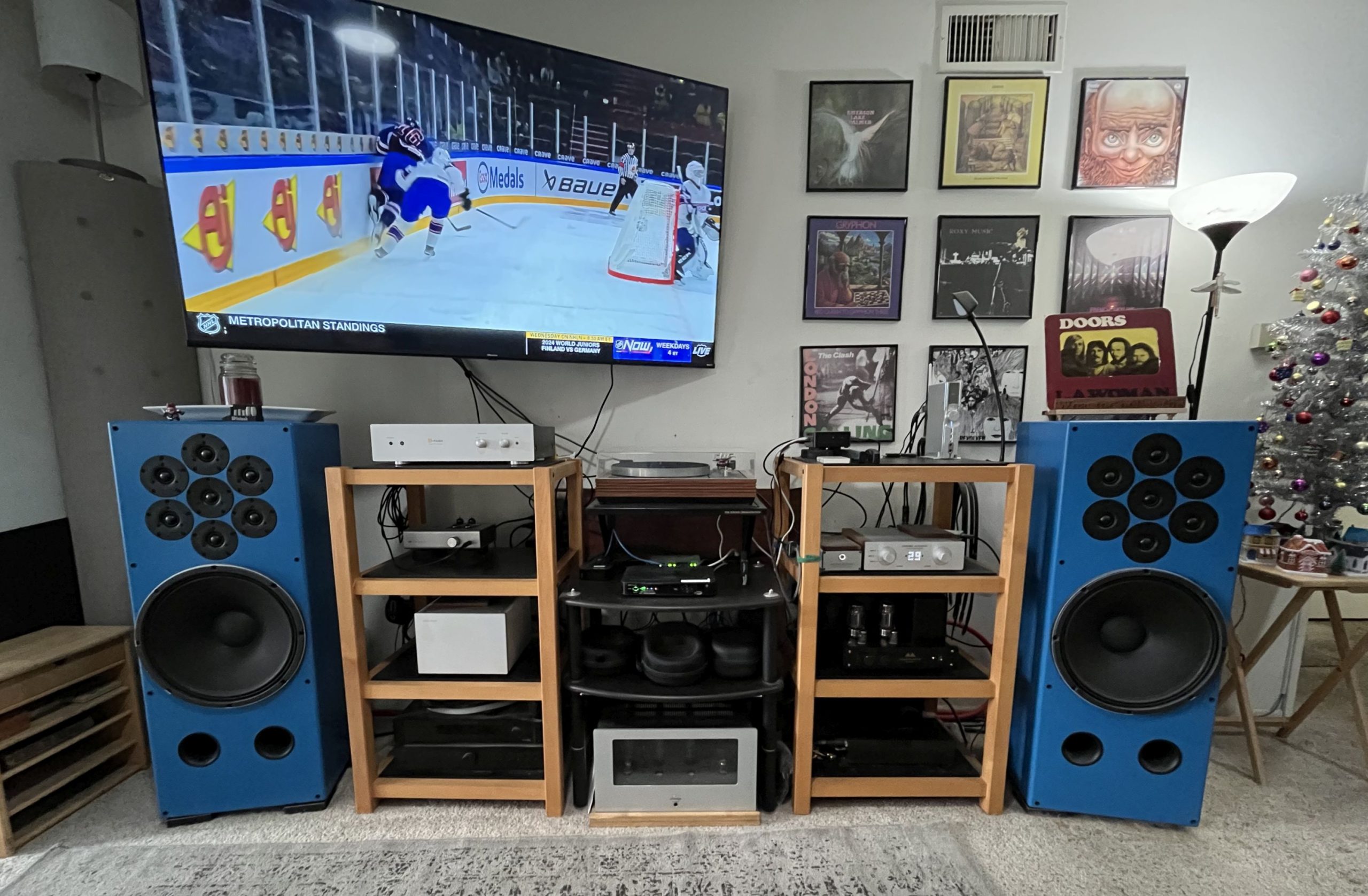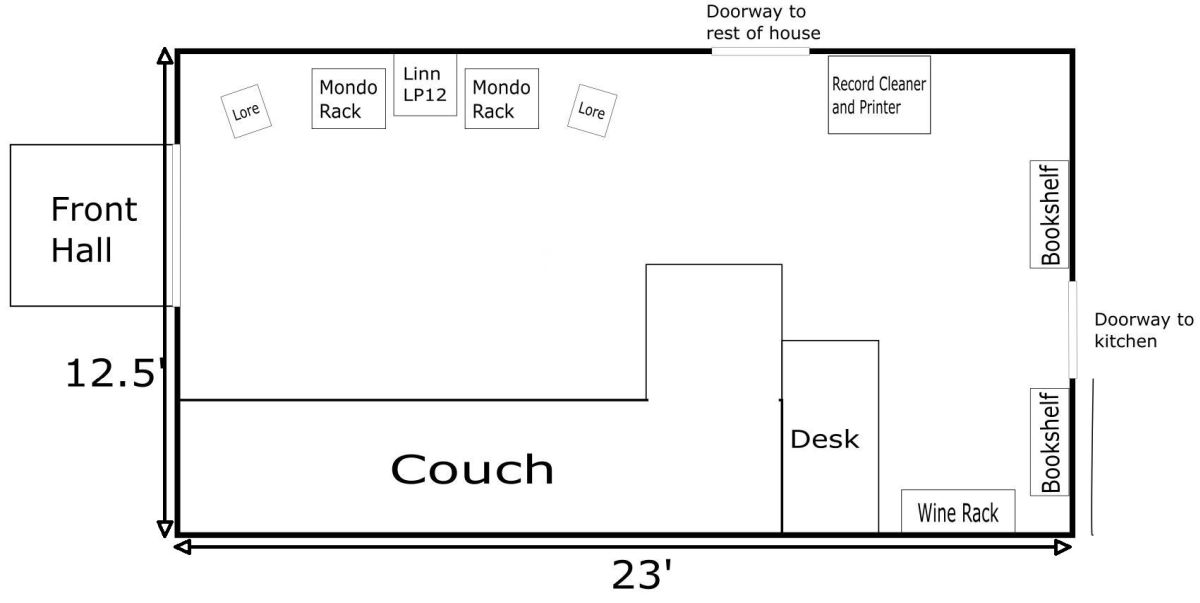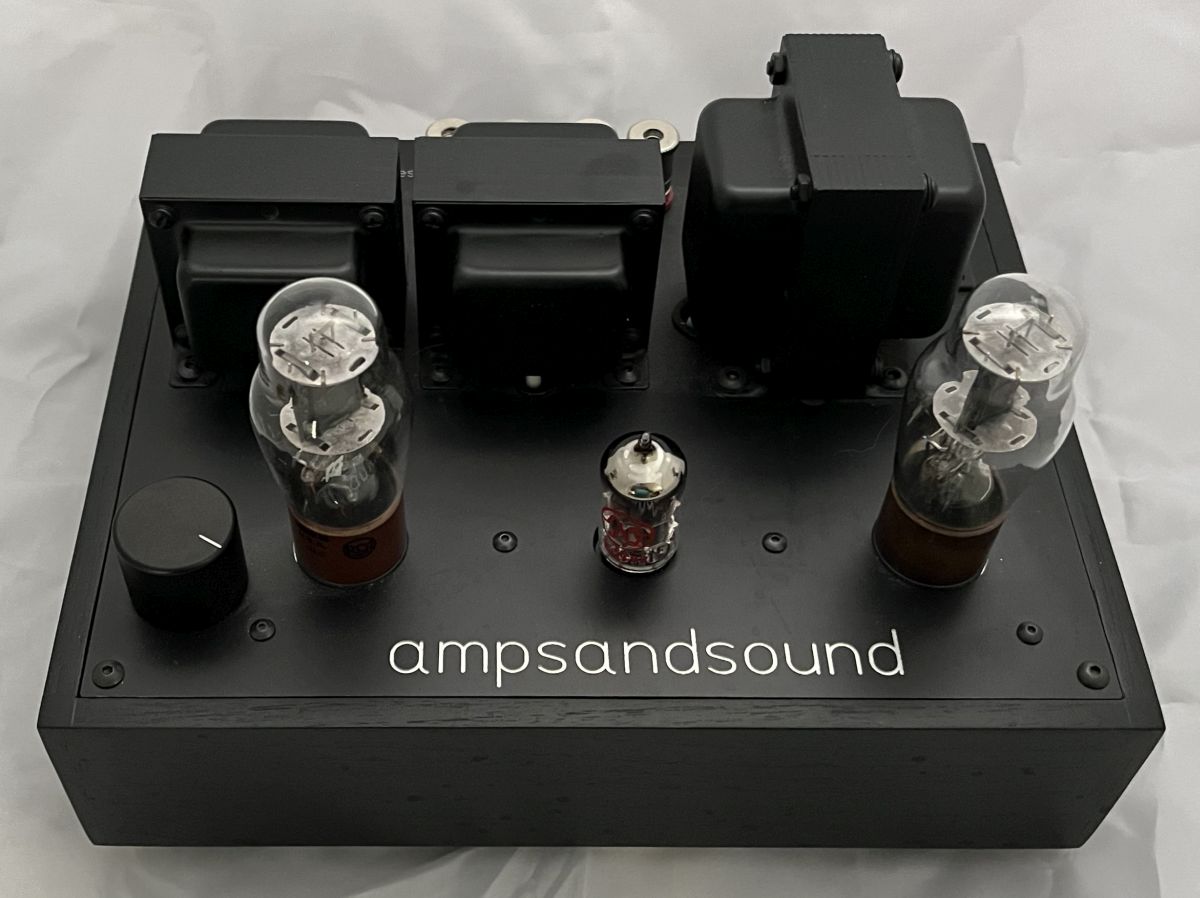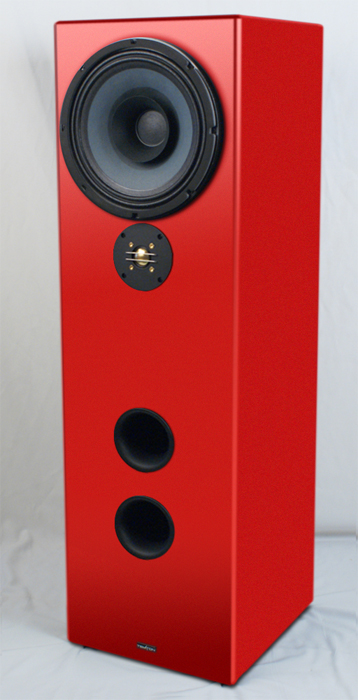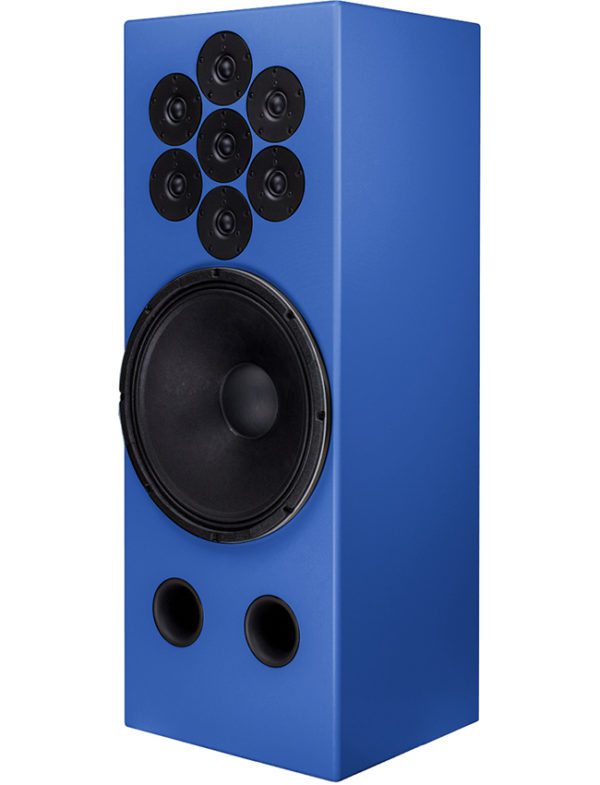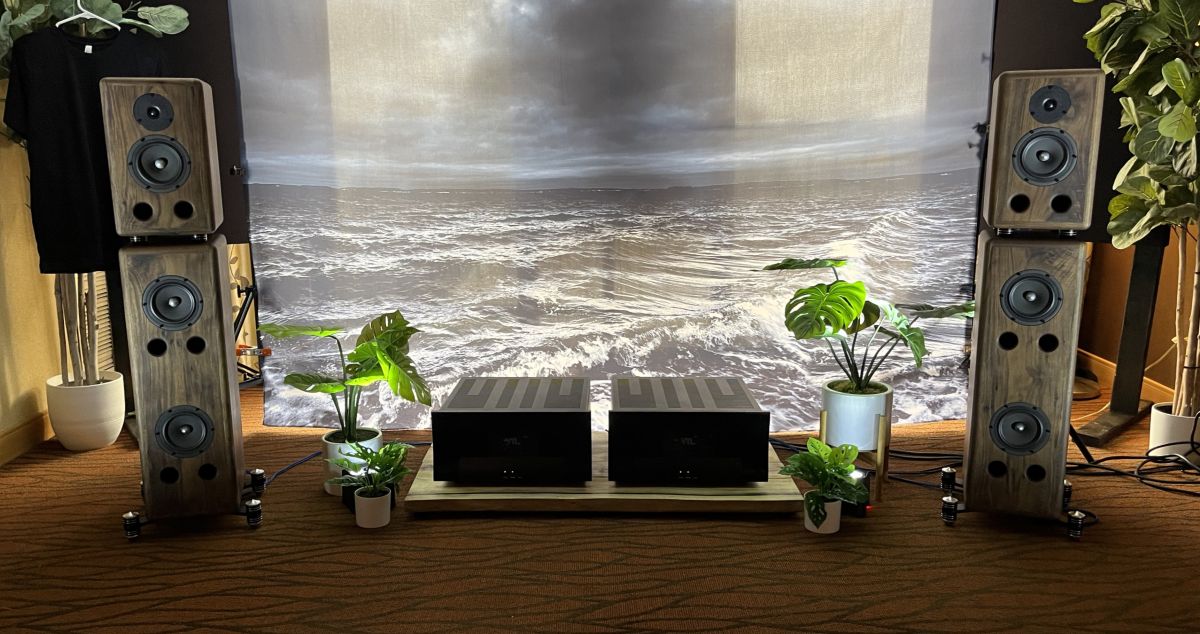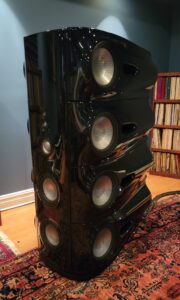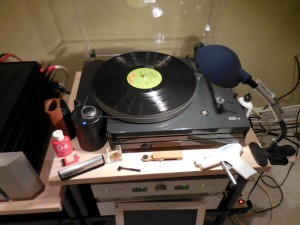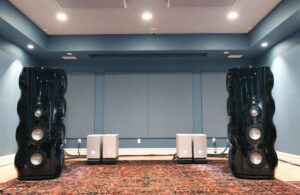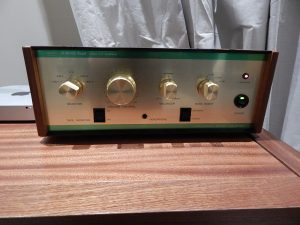This will be the first of another sporadically updated series I hope to do, maybe annually or maybe more often, about helping people set up their first real stereo system. I'll help them through the process of deciding what they hope to accomplish (hopefully wanting to listen to their favorite music at home and have it sound better), understanding what they should be able to achieve towards that end, and understanding what it will take to piece a system together that fits within their budget. I'll then help them acquire it, and set it up for them. I'll write up an article like this explaining the process and the results.
To be clear, I will not be representing any particular company, nor making any money from this (other than what PF pays me as a writer). This is a labor of love and a passion for high-value, low-cost audio gear. It is research for articles. It is proving a point, and it is hopefully, mostly about expanding the range of people who have an interest in better sound at home.
The idea is twofold. Firstly, I want to focus on what it takes to help someone who wants to buy a real, honest-to-goodness, proper sounding first system. Giving them an opportunity to hear better systems without pretense or pressure. Letting them hear for themselves what a better audio system can do for them and their music. Letting them come to their own conclusions, but guiding them towards what is possible. Making sure they understand the whole thing is about having fun listening to music they like, and not a competition with anyone else, or an exercise in conspicuous consumption.
Secondly, I want to help seasoned audiophiles who might read this and who might have friends, relatives, coworkers, or whomever ask them for help in setting up a system. The longer we spend in our hobby, upgrading and moving up and up to better and better gear, our ability to help a newcomer can become rather distorted. Our view of price, value, and long-term satisfaction can get skewed and out of touch with people who simply want to buy a stereo. Also, our listening habits and what we focus on can be quite different from everyone else (average people as the Queen might say) and without realizing it, we can actually turn people off to the prospect of a new sound system rather than helping them get one. Hopefully someone will learn something from this series.
With all that in mind, here is the first case study with our friend Julie.
We've known Julie for several years. She was a math teacher at the grade school our son went to, one of her sons and ours became good friends while there, and as a result we all did too. That friendship is approaching twenty years now. She had heard our system a few times over the years, but usually with other people there, and never in a situation where she could really get time to hear what it could do. I had many times in the past suggested that when she was ready or interested, I would help her buy a stereo for her house. Her daughter had taken piano lessons, and her two sons are very into music. One plays bass in an up-and-coming local band (Devil Season, their recent album Going South is available on LP and various streaming services, and is very good) and the other has an extensive music background, plays guitar quite well and creates EDM tracks. Julie also plays piano and loves jazz, Motown and other genres of music.
To kick this off, I invited her to come hang with us in our exhibit at the LA Audio Show. She came by on Saturday of the show and sat in the room listening, visiting, and talking to people for several hours. As often as we switched out speakers and amplifiers, switched between LPs, files from my music server, and streaming from Tidal HiFi, she got to hear a wide variety of music through several different setups. The smile on her face through most of it seemed to let me know she was getting it, and understood why some of us are so passionate about our audio systems.
At the end of the day, after the show closed and before we headed out for dinner, we spent about an hour or so in a private demo where Julie got to focus on systems that were in the price range she felt was appropriate. We swapped speakers (ELAC Debut B6 and F5, Emotiva Airmotiv B1, Tekton Lore, and even the Magneplaner .7). We kept the electronics to the three lower cost integrated amps we had on display (Emotiva TA-100, Music Hall a15.3, and ELAC EA101EQ-G). We played mostly from Tidal, and only played music she requested to make sure she really connected with whatever she was hearing. Over dinner afterwards she seemed very enthused, but said she wanted to think about it for a bit.
A couple weeks later she sent me a message that she was ready to pull the plug and get a system, but wanted some suggestions to fit within a particular budget. We started discussing what she wanted. Some things I hadn't considered came up and really helped focus on getting things right for her. For example, I hadn't thought of either a CD player or FM tuner, but both of those were important. She has a collection of CDs and didn't seem too interested in ripping them to a computer or server. Hooking the TV up to the system was important too. And, though moving some furniture around a little bit to make sure the system sounded as good as possible was okay, a complete redesign of the living room was not. Understanding these issues made system suggestions much easier.
The need for integrated digital inputs eliminated the Music Hall a15.3 even though that is a superb sounding, classically styled integrated amp with an excellent moving magnet phono stage. Adding digital to it would add cost and complexity. It would be easy to recommend in other systems with different criteria, but not at this time. That left the Emotiva and ELAC. With a $300 price difference in favor of the Emotiva, which also included an FM tuner and had a matching CD player for $299, the decision was made to go with the Emotiva line for electronics. It did mean giving up some of the really cool features of ELAC, such as the iPhone app for a full service remote, the built-in ability to do some DSP for bass tuning, and presetting individual volumes for each input. Plus, the ELAC is a very good sounding amp, using BASH technology (like a lot of mobile/car amps) to be almost as efficient as Class D, but without Class D technology.
I tried the CD player at home and compared the analog outputs into the TA-100 amp versus the digital out into the DAC of the TA-100. I felt the integrated DAC of the TA-100 to be far superior. Most noticeable was an improvement in tonal balance and dynamics. I had compared the analog and digital outs from this CD player at the show using the Emotiva amp, as well as the ELAC, and even into the Schiit Audio gear (analog into the Freya preamp, the digital out into the MultiBit Bifrost DAC), and the differences were consistent. For $299, the CD-100 is a decent CD player, but an excellent transport. Paired with the TA-100 amplifier, it is best to take advantage of the ability to play into the digital input of the amplifier.
Last item we added was an Emotiva BTM-1 Bluetooth adapter ($49.99) to allow Julie to stream her Spotify account easily from her phone. I suppose the hard-core audiophiles will scoff at this part, but it is a nice option, and as Bluetooth improves, it broadens the appeal of better audio. I thought this option was a good addition.
So we had the electronics set: the Emotiva TA-100 Integrated Amp and matching CD-100 CD player.
Next step... speakers.
I felt the floor-standing ELAC Debut F5, one of my favorite speakers around the $500 price point, would be a good choice, but Julie liked the idea of small stand mounted speakers. She wanted to be able to easily move them when necessary. We had both the ELAC Debut B6 and the Emotiva Airmotiv B1 speakers for small standmount designs around the $300 mark on display at the show, and Julie got to hear them both. There were interesting differences between them. On their own, the ELAC has a fuller sound, better top to bottom balance and certainly deeper and more pronounced bass response. However, the Emotiva are more detailed, have a clearer, airier, and more transparent top end (the folded ribbon AMT tweeter is really nice) and matched up with the low-priced Emotiva BasX S8 subwoofer ($199) made for a very convincing full range system, at the same basic price as the floor-standing ELACs. Speakers (and a sub) were settled on.
Let finish things off!
Obviously the speakers needed stands, and we needed to look no further than the Pangea LS300 stands like we used at the show. They were only $99.95 for a 32-inch tall set that were perfectly sized for the Emotiva speakers. At this point, we went low cost on cables spending about $20 total through Amazon for an Amazon Basics Toslink cable (to hook the TV up), a Media Bridge Subwoofer cable, and one-foot long S/PDIF Cables2Go Digital cable to connect the coax out of the CD player to the coax in on the Emotiva amp. We didn't order any speaker cables yet. I wanted to wait until we had the positioning for everything set at which point I would assemble some cables for the system. I brought some of the cables from my collection to use in the meantime (a twelve foot pair of Audioquest Type 4, which are excellent, but at about $300 were beyond the budget for this system.) and hoped that the differences between these and the lower cost cables we were going to use wouldn't be too noticeable.
One other accessory ordered at the time was a Belkin BP112230-08 12-outlet power strip ($64.99 list but purchased from Amazon for $30.77). I had used three of these at the show and in spite of having so many different pieces of electronics plugged into them, there were no issues with hum, ground noise, or anything else. Plus with eight of the twelve outlets being mounted in rows of four along each side, and being able to swivel individually, they allowed for easy connection regardless of the use of multiple wall-warts or their orientation. These may not offer the power line conditioning of the high-ticket power line conditioners some audiophiles use (including me), but they are an excellent choice in a system like this, and do offer substantial surge protection.
People were contacted, orders were placed, and the following week all the gear was at Julie's house. My wife, Rosina, and I made arrangements to go to her house that Friday evening for dinner and the system setup. We unboxed everything, gave it all an inspection, made sure everything arrived in good condition, and cleared all the boxes out of the way. The Emotiva gear is impressive in how they package everything, with the speakers and electronics not just well protected in foam and cardboard, but individually wrapped in nice cloth bags. For someone new to high quality audio, this helps build confidence and reminds them they are getting something special.
We decided to assemble the speaker stands before going for dinner, which didn't take long at all. I built one while Julie built the other one. The amplifier was plugged in and turned on to start warming up. Everything else was connected, and I positioned the speakers where I anticipated to be near where they would end up. Then we went out for a nice dinner at a nearby restaurant. It was actually fun seeing the level of excitement and anticipation building, as we knew what would happen when we returned.
When we got back, not wanting to ruin the surprise of hearing her first tune, I asked to have the room for a bit so I could work on positioning the speakers and adjusting the subwoofer. Julie and Rosina headed to the kitchen to get some wine and chat about stuff (not being sexist, but that's where the wine was). Meanwhile, I used a combination of Stereophile's Test CD2 (mostly the pink noise track set to repeat) and Studio Six's Audio Tools on my iPhone to position the speakers and balance out the sub. That got me close enough that a few minutes fine tuning the positioning by ear with a few favorite tracks had everything sounding very nice.
Julie and Rosina returned to the living room, and I asked Julie to pick a "first tune," but asked her to pick a favorite, something that would simply be special, as it would be her first time hearing the new system. She decided on Miles Davis "My Funny Valentine" from the concert album of the same name.
"Oh my god, it's like he's in the room…"
Ten seconds in, the expression on her face told me we had achieved everything we had set out to.
We spent the next hour swapping CDs while also going over the various functions of the amplifier. Also checked out the FM tuner section on KKJZ (88.1), the local jazz station. I had a USB cable plugged into the USB input on the amp in case anyone wanted to plug in a notebook to stream directly, instead of via Bluetooth. I plugged in my notebook, and played requested tracks from Tidal (Hifi or Master). Everything was sounding really sweet.
Last step was trying out the turntable one of her sons had given her. It had a non-defeatable phono stage, so we plugged it in to a line level input. I had just played the track "Street Rat" from her son's band's album that I had on my Questyle QP1, and the comment was that it didn't sound anything like the record. Discovered pretty quickly that this inexpensive USB turntable was simply not working well at all. Speed variations were way beyond wow/flutter and could only be described as broken. We disconnected the table.
At this point, I ordered thirty feet of Belden 5000UE cable and four pairs of gold plated banana plugs from Blue Jeans Cable to put the speaker cables together for this system. Fifteen feet per side was going to be just right. Total price $34.25.
Over the next few days, we received several text messages from Julie about how much she loved the new system. Later that week, Julie asked about a new turntable. I still had the Music Hall mmf-1.3 from the show ($299) and after a quick call to Music Hall, they said she could just mail them a check and keep that one and even gave her a nice deal on it. We returned the following Friday to install the turntable, the new speaker cables, and enjoy another meal together.
For $299, the Music Hall mmf-1.3 is a nice table that comes complete with a decent Audio Technica cartridge and a built-in phono stage that can be easily bypassed. I had checked the cartridge alignment when we initially set this table up at the show, and it was spot on, which is nice. I've checked some other tables with pre-installed cartridges that weren't all that well aligned. Julie made room on the shelf above the electronics and the supplied cables were long enough to reach, so setup really took just a few minutes. Although everything sounded nice with the built-in phono preamp, we felt it was a little better through the phono stage of the Emotiva amp, so we flipped the switch on the built-in stage to bypass it.
I brought my Record Doctor V record cleaner with me, and we cleaned several of Julie's records before playing them. I forgot to write down what she picked for her first LP, but it really sounded quite nice. There is always a bit of surprise from people when they hear a clean record that isn't all noisy and crackly sounding. We flipped through several LPs with another glass of wine. I had brought an old copy of Ben Webster and Sweets Edison's Columbia release Ben and Sweets, and it sounded really sweet, capturing the wonderful ease of Webster's mellow style on the sax. Julie had purchased a good carbon fiber record brush, so her newly cleaned records would stay dust free for future spins on the table.
We have talked with and visited Julie many times since installing her system and it is obvious that this system hit the mark on all counts. I sent her a brief questionnaire and just asked for short, quick replies as to how this whole thing went. Here's how she responded:
When did you decide you wanted to get a real stereo system for your home?
After listening to music on the equipment at the audio show, I was convinced that it was time for an upgrade.
Why had you waited and not purchased one earlier?
I wasn't sure what to buy and thought it would be expensive, so I was putting it off.
If you hadn't spoken to me about it, where would you have looked for a stereo or would have even still pursued it?
I would have asked my kids to help me buy one online. My two sons know a lot about music and equipment and would have been glad to help me (or I might have gone to a store like Best Buy.)
Had you heard of any of the brands you purchased before this?
No, I had not heard of them.
Now that you have had your new system for a while, do you use it as much as you expected to? More or less?
I listen to it more than I expected and I always use the system for sound while watching television.
What are a few things you enjoy most about it?
I love the Bluetooth connection! The sound is amazing—like having live music in my living room. I turn the volume up and I can hear it well from the kitchen while I cook.
Do you consider this a done deal, and are you happy with how it turned out, or do you see yourself potentially upgrading any parts of the system in the future?
I am very happy with what I have and I doubt if I'll need anything else.
So overall, do you feel adding a real, high quality stereo to your home was a reasonable and worthwhile thing to have done?
Absolutely! The price was very reasonable and the quality is superb. This was a great purchase.
Any additional comments (optional)?
Steve, you were a huge help! Thank you.
Julie's System
- Emotiva BasX TA-100 Amplifier: $399
- Emotiva CD-100 CD Player: $299
- Music Hall mmf-1.3 Turntable: $299
- Emotiva Airmotiv B1 Loudspeakers: $299
- Pangea LS-300 32" Speaker Stands: $99.95
- Emotiva BasX S8 Subwoofer: $199
- Belkin BP112230-08 Power Strip: $30.77
- Amazon Basics Digital Toslink Cable: $6.49
- Mediabridge ULTRA Subwoofer Cable: $8.99
- C2G/Cables to Go Digital Cable: $4.20
- Belden 5000UE Speaker Cable: $34.25
- Emotiva BTM-1 Bluetooth adapter: $49.99
Total system price: $1729.64




